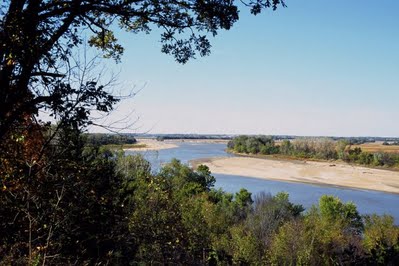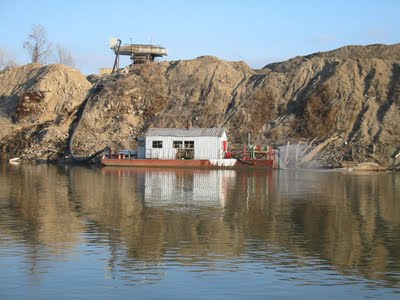What will the future of the Kaw look like?
You decide!
“When protected, rivers serve as visible symbols of the care we take as temporary inhabitants and full-time stewards of a living, profoundly beautiful heritage of nature.”
– John Echeverria, Pope Barrow, Richard Roos Collins, Rivers at Risk: The Concerned Citizen’s Guide to Hydropower
What is Dredging?
Dredging is the removal of sediment from a streambed. In the Kansas River, this sediment is largely made up of fine sand, which is used to produce concrete and asphalt. Dredging machines scoop or suck material from the bed of the channel, then transport it to the riverbank where another machine separates out the usable components. The Kaw has been commercially dredged since the 1900’s.
Dredging in the Kaw can result in:
- Holes in the riverbed that migrate and expand
- Erosion and slumping of river banks
- Degradation of the river bed
- Alteration and widening of the river channel
- Loss of farmland in the floodplain
- Loss of trees and vegetation that provide habitat for wildlife near the river
- Degradation of habitat for native fishes
- Re-suspension of pollutant-carrying sediment
- Potential hazards for boaters due to hidden cables
- Damage to near-river infrastructure such as bridges, railroads, and flood control structures resulting in expensive taxpayer funded repairs and bank stabilization projects
What Can We Do?
Friends of the Kaw’s ultimate goal is a complete halt to in-river dredging. We believe giving in-river dredging operations five years to make the transition to appropriately sited pit mines in the Kansas River valley is feasible. For the time being, however, we encourage additional sampling and monitoring of the river channel near dredge holes to help us understand more about how – and how quickly – damage occurs. The more we know, the more effectively we can protect the river from the harmful effects of dredging.
Visit the pages below to learn more about dredging and how it affects the Kaw, and be sure to sign up for our newsletter. We’ll keep you informed about dredging and other issues affecting the Kaw and about how you can make your voice heard.


